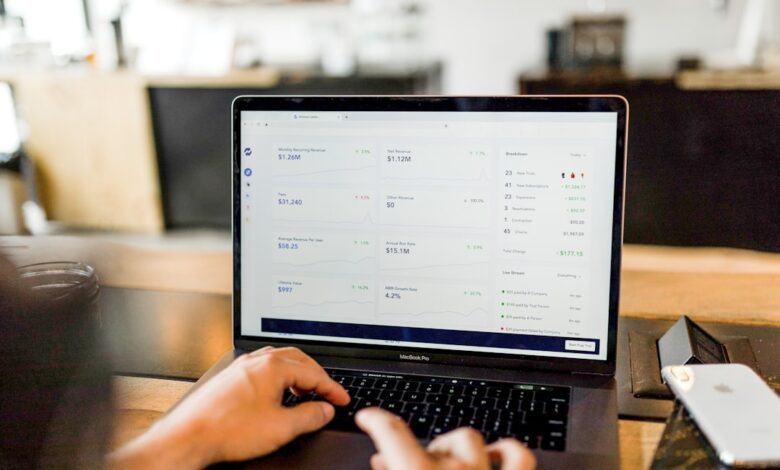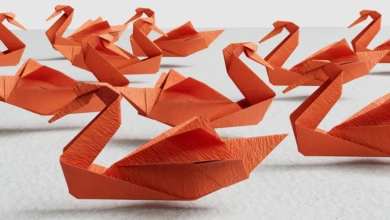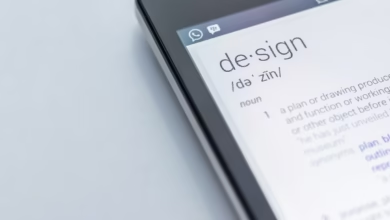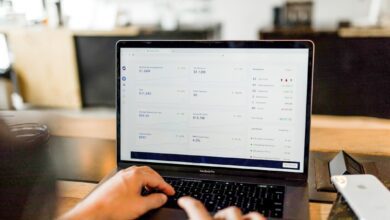Metals in Motion: Exploring Industrial Demand, Investment Trends, and Economic Indicators

In an era marked by rapid technological advances and shifting economic landscapes, the role of metals has never been more significant. From the increasing reliance on rare earth metals to power green energy technologies to the fluctuating prices of copper as indicators of global economic health, the metal markets are a complex tapestry woven from both industrial needs and investment strategies. This article delves into the multifaceted roles of various metals, with a particular focus on silver, copper, and rare earth elements, while also exploring the investment potential of platinum and palladium, the implications of inflation, and the future of aluminum in a sustainable economy. By examining the intricate interplay between these metals and market dynamics, we aim to provide a comprehensive understanding of how these resources can not only serve as vital components in industrial applications but also as strategic assets in diversified investment portfolios. Join us as we navigate these critical topics and uncover the broader implications for investors and industry stakeholders alike.
- 1. "Silver's Dual Function: Navigating Industrial Applications and Investment Opportunities"
- 2. "Copper Prices as Economic Barometers: Understanding Global Market Signals"
1. "Silver's Dual Function: Navigating Industrial Applications and Investment Opportunities"
Silver's unique properties make it a vital asset in both industrial applications and investment markets, positioning it as a multifaceted commodity. In the industrial sector, silver is prized for its exceptional conductivity, thermal properties, and resistance to corrosion. These attributes render it essential in various applications, including electronics, solar panels, and medical devices. The expanding use of silver in emerging technologies, such as electric vehicles and renewable energy systems, has further solidified its role in the industrial landscape. As industries increasingly prioritize sustainability and efficiency, the demand for silver in green technologies is expected to grow, driving its consumption.
On the investment side, silver is often viewed as a safe-haven asset, particularly during times of economic uncertainty and inflation. Investors turn to silver as a hedge against currency devaluation and market volatility, similar to gold. Its dual role as both a precious metal and an industrial commodity creates a complex relationship where shifts in either market can significantly influence prices. For instance, when industrial demand surges, it can enhance investment interest, leading to price increases. Conversely, during economic downturns, investors may flock to silver as a store of value, impacting its market dynamics.
Moreover, the accessibility of silver relative to other precious metals makes it an attractive option for individual investors. Silver's lower price point allows for easier entry into the precious metals market, fostering a diverse investor base. This combination of industrial utility and investment appeal positions silver as a versatile asset that responds to both market trends and technological advancements, making it a compelling consideration for those looking to navigate the complexities of modern commodities trading. As global economic conditions evolve, the interplay between silver's industrial and investment roles will continue to shape its trajectory in the marketplace.
Silver plays a multifaceted role in both industrial and investment markets. In the industrial sector, silver is highly valued for its exceptional electrical conductivity, thermal conductivity, and reflectivity, making it an essential component in electronics, solar panels, and various medical applications. The growth of green technologies, particularly in solar energy, has driven demand for silver, as it is a critical element in photovoltaic cells. This industrial demand often influences silver prices, reflecting broader trends in technology and manufacturing.
On the investment side, silver is seen as a safe haven asset, similar to gold. Investors often turn to silver during times of economic uncertainty or inflationary pressures, as it tends to maintain value. Silver's dual role—as a precious metal and an industrial commodity—creates a unique market dynamic; fluctuations in industrial demand can significantly impact its price trajectory. Additionally, the correlation between silver and gold prices often prompts investors to consider silver as part of their overall investment strategy.
Copper prices serve as a barometer for global economic health, primarily due to its widespread use in construction, electrical wiring, and manufacturing. As economies expand, the demand for copper typically increases, leading to higher prices. Conversely, during economic downturns, reduced demand can result in falling copper prices, which may signal a slowdown in economic activity. This relationship makes copper an important indicator for investors and policymakers alike, as its price movements can provide insights into economic trends.
The demand for rare earth metals has surged with the rise of green energy technologies, such as electric vehicles and renewable energy sources. These metals are crucial for manufacturing batteries, magnets, and catalysts used in various applications. The transition to a sustainable economy is driving an increased need for these materials, leading to heightened competition and, consequently, price volatility in the rare earth metals market.
In the realm of precious metals, the debate between platinum and palladium as investment options continues. Both metals have unique properties and applications, particularly in the automotive industry for catalytic converters. However, market dynamics, including supply constraints and regulatory changes, often favor one over the other at different times. Investors must consider factors such as market demand, historical performance, and future outlook when deciding which metal offers the best investment potential.
Metals play a critical role in diversifying investment portfolios. They often have low correlations with traditional asset classes, such as stocks and bonds, providing a hedge against market volatility. Including a variety of metals—precious, industrial, and rare earth—can enhance portfolio resilience and improve overall returns.
Inflation significantly impacts the prices of both precious and industrial metals. As inflation rises, the purchasing power of currency declines, leading investors to seek tangible assets like metals as a store of value. This shift can drive up prices, particularly for precious metals, which are traditionally viewed as a hedge against inflation.
The future of aluminum appears promising in a sustainable economy, as it is lightweight, recyclable, and essential for energy efficiency. Its use in industries ranging from aerospace to automotive continues to grow, driven by the demand for reduced emissions and increased fuel efficiency. As sustainability becomes a priority, aluminum's role in innovative applications is likely to expand.
Finally, mining regulations have a profound impact on metal prices. Stricter environmental regulations can limit supply, leading to increased prices, while reforms aimed at facilitating mining operations can enhance production and stabilize markets. The balance between sustainable practices and economic viability remains a critical consideration for the mining sector, influencing both market dynamics and investment decisions.
2. "Copper Prices as Economic Barometers: Understanding Global Market Signals"
Copper prices are often regarded as reliable indicators of global economic health, earning the nickname "Dr. Copper" due to its historical ability to predict economic trends. As a widely used industrial metal, copper is integral to various sectors, including construction, electronics, and manufacturing. Fluctuations in its price can signal changes in demand for these industries, reflecting broader economic conditions.
When economies are thriving, the demand for copper typically rises, leading to higher prices. This increased demand can stem from robust construction activity, higher manufacturing output, or significant investments in infrastructure projects. Conversely, during economic downturns, demand for copper tends to decline, resulting in lower prices. For instance, global events such as trade disputes, geopolitical tensions, or economic slowdowns can create uncertainty, causing copper prices to drop as market participants anticipate decreased demand.
Moreover, copper prices can also provide insights into emerging market trends. As developing countries, particularly in Asia, continue to industrialize, their consumption of copper increases, driving up global prices. Therefore, tracking copper price movements can offer predictions about growth trajectories in these regions.
Investors and analysts often monitor copper price trends alongside other economic indicators, such as GDP growth rates, manufacturing indices, and employment data, to gain a comprehensive view of economic health. When copper prices rise consistently, it can indicate a recovery or expansion phase, while declining prices may signal an impending recession or stagnation.
In summary, copper prices serve as an essential economic barometer, reflecting the interconnectedness of global markets and providing valuable insights into the health of the economy. Understanding these price movements can help stakeholders make informed decisions in both investment and industrial contexts.
In conclusion, the multifaceted role of metals in both industrial and investment markets underscores their significance in today’s economy. Silver, with its unique blend of industrial applications and investment potential, exemplifies the dynamic nature of precious metals. Similarly, copper prices serve as critical indicators of global economic health, reflecting shifts in demand and supply that resonate through various sectors. The surge in green energy technologies has amplified the demand for rare earth metals, positioning them as essential components in the transition to a sustainable future.
Furthermore, the ongoing debate between platinum and palladium as investment choices reveals the complexities of market preferences and asset diversification strategies. As investors seek to hedge against inflation, the interplay between precious and industrial metals becomes increasingly relevant, with each metal offering unique benefits in mitigating economic uncertainties. The future of aluminum also holds promise, particularly in sustainable practices that align with global environmental goals.
Lastly, the influence of mining regulations on metal prices cannot be overlooked, as policies shape the landscape of mineral extraction and market dynamics. Together, these factors paint a comprehensive picture of how metals not only serve vital industrial functions but also play a crucial role in investment strategies. As we move forward, staying attuned to these trends will be essential for investors and industry stakeholders alike in navigating the evolving landscape of the metals market.





